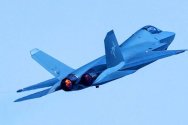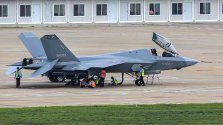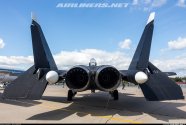You are using an out of date browser. It may not display this or other websites correctly.
You should upgrade or use an alternative browser.
You should upgrade or use an alternative browser.
J-35A fighter (PLAAF) + FC-31
- Thread starter ACuriousPLAFan
- Start date
Fake News by Indian Media.Is this real, Pakistan will receive J-35A's from China in August this year at 50% discount?
Different sensor form factor, maybe? Maybe the J-35A uses a sensor in the tail with bigger form factor, so it has to protrude into the control surface a bit. I wonder if it makes any difference for the aerodynamics, I imagine the tip of the rudder surface will usually be inside the vortex anyways.I didn't mean from the photo itself that I spotted the difference in the vertical stabs...
On a related note, I've seen a lot of discussion around hinge vs. pivot style horizontal stabilators.. specifically ones that seem to prefer a pivot design. I've read that the F-35 went with the hinge design for signature reduction reasons. Not very informed on this and couldn't find any details myself, would anyone (re-?)explain what other impacts could be? Thanks in advance.
lcloo
Major
Ths is AI generated answer to the question on advantages and disadvantages of hinged and pivoting horizotal stabilizers.
The choice between hinged and pivoting horizontal stabilizers on a fighter jet significantly impacts maneuverability, control authority, and aerodynamic efficiency. Here's a breakdown of their advantages and disadvantages:
### **Hinged Horizontal Stabilizers (Elevators)**
These stabilizers operate like conventional elevators, where a fixed horizontal stabilizer has a hinged control surface that moves to change pitch.
#### **Advantages:**
- **Simpler Design** – Easier to manufacture and maintain, making it a reliable choice.
- **Gradual Control** – Offers fine-tuned pitch adjustments, useful for stable flight.
- **Less Structural Stress** – The fixed stabilizer bears the aerodynamic forces, reducing strain on the actuator mechanisms.
#### **Disadvantages:**
- **Reduced Authority at High Speeds** – At supersonic speeds, hinged surfaces can struggle to generate sufficient pitch authority.
- **Potential Buffeting Issues** – At high angles of attack, airflow separation may cause instability and vibration.
---
### **Pivoting Horizontal Stabilizers (All-Moving Tail, or "Stabilator")**
Instead of a separate hinged elevator, the entire stabilizer pivots, offering greater control authority.
#### **Advantages:**
- **Improved Pitch Control at High Speeds** – At supersonic velocities, stabilators remain effective when hinged elevators lose efficiency.
- **Greater Maneuverability** – Provides faster response in rapid pitch changes, vital for dogfighting and evasive maneuvers.
- **Reduced Drag** – Eliminates hinge gaps, improving aerodynamic efficiency.
#### **Disadvantages:**
- **More Complex Mechanisms** – Requires stronger actuators and robust control systems to manage entire stabilizer movement.
- **Higher Structural Load** – The entire stabilizer must withstand aerodynamic forces, leading to potential structural challenges.
- **Potential Overcorrection Risks** – Due to its higher responsiveness, improper input can lead to excessive pitch changes.
Most modern fighter jets, like the F-22 Raptor and F-35 Lightning II, use pivoting stabilators due to their superior high-speed control. Older aircraft, such as the F-4 Phantom II, transitioned from traditional elevators to stabilators for better supersonic handling.
The choice between hinged and pivoting horizontal stabilizers on a fighter jet significantly impacts maneuverability, control authority, and aerodynamic efficiency. Here's a breakdown of their advantages and disadvantages:
### **Hinged Horizontal Stabilizers (Elevators)**
These stabilizers operate like conventional elevators, where a fixed horizontal stabilizer has a hinged control surface that moves to change pitch.
#### **Advantages:**
- **Simpler Design** – Easier to manufacture and maintain, making it a reliable choice.
- **Gradual Control** – Offers fine-tuned pitch adjustments, useful for stable flight.
- **Less Structural Stress** – The fixed stabilizer bears the aerodynamic forces, reducing strain on the actuator mechanisms.
#### **Disadvantages:**
- **Reduced Authority at High Speeds** – At supersonic speeds, hinged surfaces can struggle to generate sufficient pitch authority.
- **Potential Buffeting Issues** – At high angles of attack, airflow separation may cause instability and vibration.
---
### **Pivoting Horizontal Stabilizers (All-Moving Tail, or "Stabilator")**
Instead of a separate hinged elevator, the entire stabilizer pivots, offering greater control authority.
#### **Advantages:**
- **Improved Pitch Control at High Speeds** – At supersonic velocities, stabilators remain effective when hinged elevators lose efficiency.
- **Greater Maneuverability** – Provides faster response in rapid pitch changes, vital for dogfighting and evasive maneuvers.
- **Reduced Drag** – Eliminates hinge gaps, improving aerodynamic efficiency.
#### **Disadvantages:**
- **More Complex Mechanisms** – Requires stronger actuators and robust control systems to manage entire stabilizer movement.
- **Higher Structural Load** – The entire stabilizer must withstand aerodynamic forces, leading to potential structural challenges.
- **Potential Overcorrection Risks** – Due to its higher responsiveness, improper input can lead to excessive pitch changes.
Most modern fighter jets, like the F-22 Raptor and F-35 Lightning II, use pivoting stabilators due to their superior high-speed control. Older aircraft, such as the F-4 Phantom II, transitioned from traditional elevators to stabilators for better supersonic handling.
I think that's not quite right. Looking back at the paper on the original FC-31, hinge-type tails are more sophisticated and arguably superior:Ths is AI generated answer to the question on advantages and disadvantages of hinged and pivoting horizotal stabilizers.
The choice between hinged and pivoting horizontal stabilizers on a fighter jet significantly impacts maneuverability, control authority, and aerodynamic efficiency. Here's a breakdown of their advantages and disadvantages:
### **Hinged Horizontal Stabilizers (Elevators)**
These stabilizers operate like conventional elevators, where a fixed horizontal stabilizer has a hinged control surface that moves to change pitch.
#### **Advantages:**
- **Simpler Design** – Easier to manufacture and maintain, making it a reliable choice.
- **Gradual Control** – Offers fine-tuned pitch adjustments, useful for stable flight.
- **Less Structural Stress** – The fixed stabilizer bears the aerodynamic forces, reducing strain on the actuator mechanisms.
#### **Disadvantages:**
- **Reduced Authority at High Speeds** – At supersonic speeds, hinged surfaces can struggle to generate sufficient pitch authority.
- **Potential Buffeting Issues** – At high angles of attack, airflow separation may cause instability and vibration.
---
### **Pivoting Horizontal Stabilizers (All-Moving Tail, or "Stabilator")**
Instead of a separate hinged elevator, the entire stabilizer pivots, offering greater control authority.
#### **Advantages:**
- **Improved Pitch Control at High Speeds** – At supersonic velocities, stabilators remain effective when hinged elevators lose efficiency.
- **Greater Maneuverability** – Provides faster response in rapid pitch changes, vital for dogfighting and evasive maneuvers.
- **Reduced Drag** – Eliminates hinge gaps, improving aerodynamic efficiency.
#### **Disadvantages:**
- **More Complex Mechanisms** – Requires stronger actuators and robust control systems to manage entire stabilizer movement.
- **Higher Structural Load** – The entire stabilizer must withstand aerodynamic forces, leading to potential structural challenges.
- **Potential Overcorrection Risks** – Due to its higher responsiveness, improper input can lead to excessive pitch changes.
Most modern fighter jets, like the F-22 Raptor and F-35 Lightning II, use pivoting stabilators due to their superior high-speed control. Older aircraft, such as the F-4 Phantom II, transitioned from traditional elevators to stabilators for better supersonic handling.
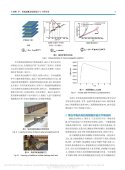
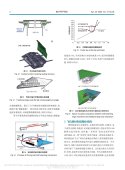
(Also the F-35 uses hinge-type tails)
So does the Su-57 and the Su-47 wait so does the Su-27. The russians went all in on the hinge tech.I think that's not quite right. Looking back at the paper on the original FC-31, hinge-type tails are more sophisticated and arguably superior:
View attachment 152970View attachment 152969
(Also the F-35 uses hinge-type tails)
...I thought the Su-47 doesn't have horizontal tails though?So does the Su-57 and the Su-47 wait so does the Su-27. The russians went all in on the hinge tech.
Oh that's wicked. Still can't forgive the asymmetrical tailstings though.It's like a blended hinge horizontal stabilizer structure, pretty unique.
View attachment 152973

